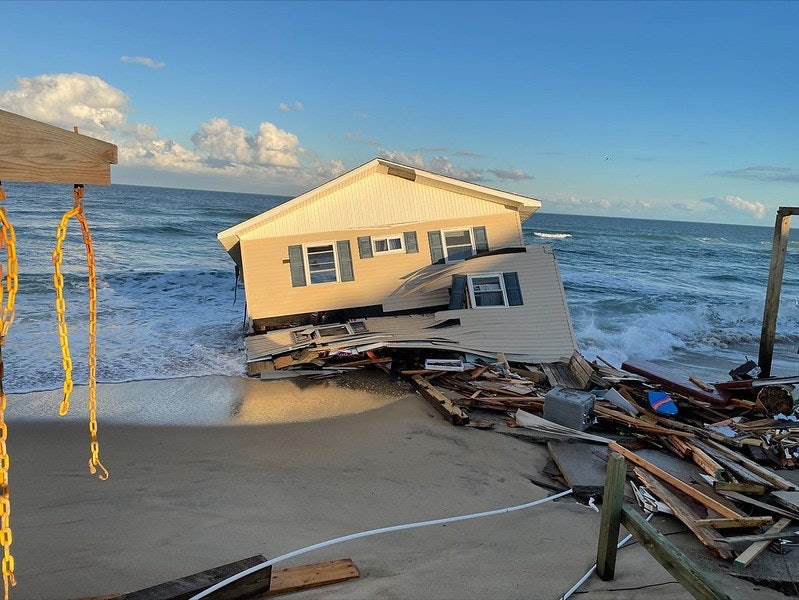
What’s your go-to tactic for restaurant orders? For me, I always try to order the thing I would enjoy eating the most but never cook at home — either because of the scarcity or the expense of the ingredients, or the faff involved in making the dish myself. I consider myself a good cook, but do I have time to confit my duck leg? No, no I do not. There is, however, another way to choose well.
This is an adapted version of the Inverse Daily newsletter for Monday, May 16, 2022. Subscribe for free and learn something new every day.
Learn all about how researchers are trying to convince you to pick for the good of your soul and the good of the planet at restaurants in today’s Inverse Daily. It’s Monday. Let’s take a deep breath in. And exhale. Now, on with the newsletter!

Can restaurant menus help diners choose climate-friendly meals?
Deciding what to eat when dining out can feel like a herculean task. Is it healthy? Is the price worth the amount of food? Should I risk trying something new or stick with my usual go-to item? But there’s one more important question that you might be overlooking: Is this meal good for the planet?
New research suggests restaurants can help customers pick more climate-friendly options with a lower carbon footprint — fewer greenhouse gas emissions — using a few simple design changes to their menus. The findings were published Wednesday in the journal PLOS Climate.
“Our study suggests that people are willing to consider the climate crisis in their dish choices,” Benedikt Seger, lead author of the study and a researcher in the psychology department at Julius-Maximilians-Universitat Wurzburg in Germany, tells Inverse.

Watch: Shocking footage shows 2 North Carolina homes claimed by rising seas
Eroding coastlines allowed tides to creep dangerously close to beachside homes. This week, the sea toppled two houses in North Carolina. The state’s Outer Banks is a popular tourist destination, home to wildlife preserves, beaches, and idyllic homes right on the water.
But the region is especially prone to rising sea levels due to coastal erosion — and its residents are already feeling the shift.
On February 9, a house in the unincorporated Outer Banks community of Rodanthe collapsed onto the shore after being battered by incoming waves. Two more followed soon after. For the residents of Rodanthe — and those across the Outer Banks — the collapses are an ominous sign of things to come.
“Unfortunately, there may be more houses that collapse onto Seashore beaches in the near future.” — David Hallac, superintendent of National Parks of Eastern North Carolina, in a statement.

These robots have one special skill that could make human chefs obsolete
“People are already eating many machine-produced foods everywhere, but it is still hard to compete with good human chefs,” Fumiya Iida, a professor in Cambridge’s Department of Engineering, tells Inverse.
Iida and his team at the University of Cambridge think they might have an (albeit rather icky) solution to the robot chef problem: In a recent paper, they describe how they taught a robot to assess the saltiness and texture of a dish at different points in the cooking process. It’s part of a growing effort to build robots that can prepare food commercially — and perhaps even edge out both line cooks and Michelin-starred chefs.
Iida’s collaborator, Grzegorz Sochacki, tells Inverse he believes that robot chefs could start replacing fast-food workers or working in ghost kitchens within the next decade — but more complicated cuisines may be more insulated from the encroachment of automatons.
“Our recent publication showed how complicated human taste perception is, and our robot chefs are still far behind,” Iida says.

Why wearing socks during sex helps you have orgasms
You’ve seen it in the movies. Kevin Hart even admits to being a real-life aficionado of the practice. And, if right-wing dirty tricks man Roger Stone is telling the truth, at least one former governor of the state of New York couldn’t do without it. Now, a video on TikTok may finally explain why men keep their socks on during sex.
The video — from a relationship advice account called Fizz Lemon — lasts all of 10 seconds and shows a woman in a red swimsuit running into the ocean with text that reads “Sex Fact: A man is 80 percent more likely to orgasm... If he is wearing socks.”
Perhaps unsurprisingly, the scientific literature on that isn’t quite so clear.
The theory that socks can help men (and women) achieve orgasm begins with a 2015 study by the sometimes-controversial neuroscientist Gert Holstege. While working at the University of Groningen in The Netherlands, Holstege a positron emission tomography (PET) scanner to look at brain activity during sexual stimulation.
“The point was that when the volunteer's in the scanner, she or he has to be comfortable, they have to feel OK,” Holstege told Australia’s ABC Radio at the time. “And one of the things that were clear, one of the things that they sometimes didn't like is that they were having cold feet.”

About this newsletter: Do you think it can be improved? Have a story idea? Want to share a story about the time you met an astronaut? Send those thoughts and more to newsletter@inverse.com.
- On this day in history: On May 16, 2011, NASA’s Space Shuttle Endeavour took off for the 25th and last time to space. The flight, STS-134, was launched from the Kennedy Space Center in Florida. It was part of the mission to the International Space Station.
- Song of the day: “A Space Boy Dream,” by Belle and Sebastian.







